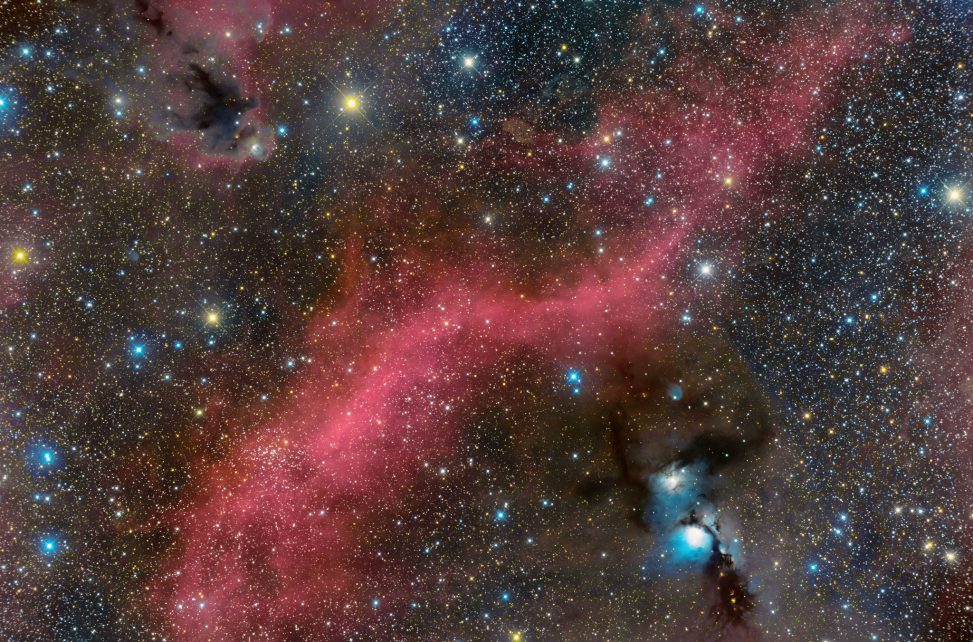Messier 78 or M78, also known as NGC 2068, is a reflection nebula in the constellation Orion. It was discovered by Pierre Méchain in 1780 and included by Charles Messier in his catalog of comet-like objects that same year.[3]
M78 is the brightest diffuse reflection nebula of a group of nebulae that includes NGC 2064, NGC 2067 and NGC 2071. This group belongs to the Orion B molecular cloud complex and is about 1,350 light-years distant from Earth.[2] M78 is easily found in small telescopes as a hazy patch and involves two stars of 10th and 11th magnitude. These two B-type stars, HD 38563 A and HD 38563 B, are responsible for making the cloud of dust in M78 visible by reflecting their light.[4]
The M78 cloud contains a cluster of stars that is visible in the infrared.[2] Due to gravity, the molecular gas in the nebula has fragmented into a hierarchy of clumps,[2] the denser cores of which about to form stars with masses of up to 5 M☉.[5] About 45 variable stars of the T Tauri type,[6] young stars still in the process of formation, are members as well. Similarly, 17 Herbig–Haro objects are known in M78.[7]
(quote from Wikipedia)
>>> Show full size photograph on the new tab. <<<<<
| Date and Place |
2021-Nov-28 |
| Scope | Takahashi Epsilon180ED + BetaSGR Focuser |
| Mount | Skywatcher EQ8 |
| Camera | ZWO ASI6200MM-Pro : -15[deg-c] |
| Auto guiding | QHY mini guide scope + ZWO ASI120 |
| Filter |
Astrodon Tru-balance Gen.2 E-series LRGB Filter |
| Exposure | Epsilon180ED + ASI6200MM-Pro L : 120×600[s], R : 22×600[s], G :21×600[s], B : 21×600[s] Total :1,840[min] = 30.6[hr] |
| Software |
Astroart8 with SHS Version 7.6 Build 89 |
